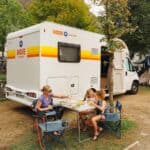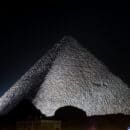Sahara Desert with kids- planning your visit
You’re planning your trip to Morocco with the kids and obviously you have to visit the Sahara Desert with the family!
Then you discover the epic journey and effort needed to get there and suddenly it doesn’t seem that appealing, does it?
So, we tried and tested it- Here’s everything you need to know for visiting the Sahara Desert with kids.
Is a trip to the Sahara Desert with kids worth it?
Should I take my kids to the Sahara Desert?
Absolutely! Will it blow your mind? Probably. Will you never want to get into a car with your kids again? Likely!

Visiting the Sahara Desert with kids is one of those things you will need to add to your bucket list.
From epic endless sand dunes, to camel riding and sandboarding, a detour to the desert is totally worth
It might not be the easiest trip you will choose to take but it’s more doable than you think.
With some careful planning, your family trip to the Sahara Desert will be an unforgettable experience.
Planning your trip
Our trip in Morocco was a self-drive journey. We hired a car in Marrakech and did a self-drive tour of the country. More on why we chose that option later.
Where to go in the Sahara?
Erg Chigaga or Erg Chebbi?
Erg Chebbi is one of Morocco’s most accessible sand dunes, located near the town of Merzouga in the eastern part of the country. It is known for its towering dunes that reach up to 150 meters (approximately 500 feet) in height.
Erg Chigaga is a more remote (slightly more difficult to reach)and quieter area, further south, near the town of M’Hamid.
The dunes here are even more expansive and can reach heights of 300 meters (with the biggest sand dunes in Morocco).
We opted for Erg Chigaga. If you have read any of our other posts about travelling in a vehicle with our kids, you will quickly realise that the car is our children’s favourite battle ground.
Why would we choose the more difficult option?
On the drive towards Ouarzazate, you will see lots and lots of coaches on their way to the desert.
These package tours are sometimes a cheaper option for getting to the desert but for us with time freedom we wanted the flexibility of self-driving.
From Ouarzazate, the coaches all veer off to Merzouga and you feel pretty hardcore making your way towards M’hamid.
How to get to the desert in Morocco
Getting to Erg Chebbi
Erg Chebbi is relatively easy to reach, making it a popular choice (readers, that means busy!).
The nearest town, Merzouga, is well-connected by road, and you can reach it by car or bus from major cities like Marrakech or Fez.
The drive takes about 8-10 hours, so if you have chosen to self-drive it’s a good idea to plan for an overnight stop along the way to break up the journey.
You’ll pass through the Atlas Mountains and can stop in towns like Ouarzazate and Erfoud along the way.
There is the option to take the bus. This isn’t a tour.
CTM or Supratours Buses: Both companies operate comfortable buses from major cities like Marrakech and Fes to Merzouga. The journey is long but affordable, and buses are usually equipped with air conditioning.
Getting to Erg Chigaga
Reaching Erg Chigaga requires more effort compared to Erg Chebbi.
From Marrakech, it’s about a 9–10-hour drive to M’Hamid, followed by a 2–3-hour off-road journey into the dunes. You will need to take a 4×4 for the last trip into the desert.
This made Erg Chigaga a better option for our family trip to the Sahara, we wanted a less crowded experience.
How many days do you need in the Moroccan Desert?
The number of days you need in the Moroccan Desert depends on what you want to experience and how much time you have available. Here’s a general guide to help you plan your trip:
1-2 Days: Quick Desert Experience
I would say this is the most popular option. We had an option of lunch in the desert which we took.
We left M’hamid at 11am and heading to the ‘oasis’ for lunch.
It was so unbelievably hot.
There also was no water in the Oasis. We did drink tea with a local Berber family and the girls managed to find a baby goat but if I was to take the trip again, I would skip lunch.

This was our itinerary.
Day 1: Arrive M’Hamid in the afternoon and settle into your accommodation. We took a walk around the town and headed to a local Kasbah. The girls played tag with local kids, we walked around the and watched the sunset.

Day 2: At 11am we heading into the desert by 4×4, stopping at a few local Berber families for tea. After a very hot and sweaty lunch at a very dry oasis, we set up to camp.
After a little explore, we took a short camel ride to watch the sunset over the dunes.
This also included climbing one of the tallest sand dunes (which I imagine is pretty similar to climbing an actual mountain in terms of effort needed!).

When we returned to camp, a huge tour group had arrived, so after dinner, our guide arranged for our beds to be set up in the sand dunes so we could sleep under the stars.
Day 3: Wake up early to watch the sunrise over the desert. After breakfast, explore the dunes on foot and try sandboarding. On the way back to town, go fossil hunting at Erfoud.
How to self-drive to the Sahara Desert?
Driving in Morocco is an experience! You can read more here. We spent 8 weeks driving all types or roads, and terrains. Driving yourself to the desert is totally doable.
Vehicle Choice: Rent a reliable vehicle, preferably a 4×4 if you’re heading to more remote areas like Erg Chigaga. While the roads to Erg Chebbi are mostly paved, a 4×4 provides more comfort and flexibility.
Road Conditions: Roads to Merzouga (Erg Chebbi) are generally in good condition and paved, but you may encounter winding mountain roads and occasional potholes. The drive to M’Hamid involves more challenging terrain, but in general, really good roads.
If you choose M’hamid and Erg Chigaga, you will need a 4×4. We opted to hire a guide.
Navigation:
Use GPS or a reliable map app. Download offline maps for when signal gets dodgy (I’m talking about those mountain passes!).
Fuel and Supplies:
Fill up your car in major towns, the further south you travel, the harder it is to find a station.
Carry plenty of water, and snacks, and if you like to be super prepared, emergency supplies, including a spare tire and first aid kit.
Plan for Stops: The roads can be long, windy and at some points, very, very boring.
Break up the long drive with overnight stops in towns like Ouarzazate, known as the “Gateway to the Desert,” or Ait Benhaddou, a UNESCO World Heritage site.
Where to stop on the way to the Sahara Desert?
Ait Benhaddou
Ait Benhaddou is a UNESCO World Heritage Site renowned for its stunning kasbar, or fortified village.
You may have already seen this place as it’s often used in films and TV series such as Game of Thrones, Gladiator, Lawrence of Arabia, and The Mummy. It’s a beautiful stop and very picturesque.

Before 3pm, the place is packed with tour buses and tourists. Stay the night to have the place to yourself.
Ouarzazate
Often referred to as the “Gateway to the Sahara,” Ouarzazate is a town known for its film industry connections. A major attraction here is Atlas Studios, where you can learn about the history of film production in Morocco.
Todra Gorge
Todra Gorge is a canyon carved by ancient rivers, creating towering rock formations that offer a breathtaking landscape. We didn’t fancy adding a few hours onto our journey so skipped this.
What to take to the Sahara Desert
Sun Protection:
- Sunscreen: A high SPF sunscreen is crucial to protect your skin from the intense desert sun.
- Sunglasses: Protect your eyes from the bright sun and sand glare.
Hydration:
- Water: Ensure you carry a spare bottle of water even if your desert camp provides it.
Clothing:
- Loose-Fitting Clothes: opt for comfortable, breathable clothing that covers your arms and legs to protect against sand and sun. If opting for a longer camel ride, choose trousers that won’t ride up as the hair can be abrasive.
- Warm Layers: Pack a warm jacket or fleece for the cooler desert nights. The temperature can drop significantly after sunset. This wasn’t something we experienced in May.
- Scarf or Headwrap: Useful for wrapping around your head to keep sand off your face, particularly during windy conditions. Some desert camps provide these for camel rides. Also, you just kind of look cool wearing them if not.

Footwear:
- Comfortable Shoes: Durable shoes suitable for walking on sand. During the day, the sand is HOT! But, at other times, we just walked around without shoes.
Light and Power:
- Head Torch or Hand Torch: A head torch, especially if the camp uses solar power and lights are limited at night. We also used torches to point out star constellations for the kids.
- Portable Charger: Essential for charging electronics, particularly if staying in a camp that might be off the grid. Check in advance about power availability.
Health and Safety:
- Medication: Bring any personal medications you may need
- First Aid Kit: Include basics like bandages, antiseptic, and any personal medical supplies.
Photography:
- Camera: Use a protective lens and bag to guard against sand damage.
Should we hire a guide?
Honestly, in most of our travels, we usually go alone, and decide not to hire a guide.
But there have been a few instances where we have chosen to hire a guide to get the inside information such as at the Acropolis, and visiting the pyramids in Egypt. We drove ourselves to M’hamid and then hired a guide through our AirBnB to take us into the desert.
We look at the pros and cons of hiring guides here but hiring a guide for the desert made out trip much easier.
Should we book a group trip to the Sahara Desert?
When we first began researching for our trip to the Sahara with the kids, we considered the organized group tour. As budget travelers, this made sense to us.
Booking a group trip to the Sahara Desert can be a great option, especially if you prefer a structured itinerary.
The idea of having organised transportation, guided tours, and accommodation is always tempting especially with planning fatigue but the rigid structure generally doesn’t work well for kids, especially those that include very long drives and travel sickness.
Questions to Ask When Booking Your Sahara Trip
What is Included in the Price?
Clarify what is included in the quoted price and what is not. This typically covers transportation, guide services, and accommodations but may exclude additional costs like meals, tips, and optional activities. For example, on Booking.com, you will find several very good priced tours but there are additional costs.
Also, don’t forget, it’s always worth asking for a better price.
Tour Availability and Weather:
Confirm whether tours are available during your travel dates, especially in the summer months. In the crazy heat, some tours may not run. But also, do you really want to go to the Sahara Desert with kids in that weather?
Accommodation Details:
Ask for a list of stops along the tour, including the names of any hotels, riads, or desert camps where you will stay. Understand the sleeping arrangements in the desert camp.
We had a room/oven available. There was absolutely no way we could have slept in there.
Sleeping outside in the camp was also available but with the arrival of a tour group of 40 people, we crept away and our guide set our beds up just outside the camp to sleep under the stars.
An absolute highlight of our trip to the Sahara with kids.

Group Size: Inquire about the size of the group if it’s not a private tour. Knowing how many other people will be traveling with you can help set expectations.
Additional Costs: Find out if there are any additional tours or tips you should expect to pay for, and whether these are optional or mandatory.
Meal Arrangements: Clarify which meals are included and which ones you will need to pay for. Ask about the average cost of meals and make sure you advise on any dietary requirements but remember Moroccan food is delicious.
Children’s Camel Rides: Consider if children will ride their own camels or share a ride with a parent.
Tour Schedule: Request the full schedule of the tour, including all stops, arrival and departure times, and the daily itinerary to better plan your trip.
Where to stay in the Sahara Desert with kids?
There are options for all needs and budgets available. It’s not the cheapest experience but I think I’d include it as one of those once in a lifetime experiences.
1. Luxury Desert Camps
- Features: High-end amenities such as private tents with en-suite bathrooms, comfortable beds, and gourmet meals.
- Additional luxuries often include spa treatments, guided excursions, and stargazing. Surprisingly, we did not stay here.
2. Standard Desert Camps
- Features: Basic but comfortable accommodations with shared or semi-private bathrooms. Typically include traditional Moroccan meals and activities like camel rides and desert tours. This was our option.
3. Traditional Nomadic Camps
- Features: Authentic desert experience with traditional Berber tents and minimal amenities. Reflect the nomadic lifestyle with communal dining and basic facilities.
4. Hotels or Riads in Desert Towns
- Features: Standard hotels in nearby desert towns such as Merzouga, M’Hamid, or Zagora. Take a day trip into the Sahara Desert from here.
5. Eco-Friendly Camps
- Features: Focus on sustainability with eco-friendly accommodations that have minimal environmental impact. Often use solar power and promote responsible tourism practices.
Best time to visit the Sahara Desert
The best time to visit the Sahara Desert is from October to April. During these months, temperatures are more comfortable:
Daytime: Typically, between 20-30°C (68-86°F)
Nighttime: Can drop to 5-15°C (41-59°F)
We visited in May and temperatures were mid 30°C and it was HOT! I would avoid taking a trip to the Sahara in summer unless you enjoy sweating out of your eyeballs!
What activities can you do in the Moroccan desert?
Well, there is a lot of sand so…build sandcastles? Nope, the sand here is the worst for that so what else?
Camel Rides: Hop on a camel for a ride across the dunes. It’s a fun and slightly uncomfortable way to explore the desert and get a different perspective.

Watch the sunset/sunrise: Our camel ride took us to the highest sand dune to climb for the sunset.
Luckily, we set off with plenty of time because it felt like an epic hike! It was not easy; one kid almost gave up completely but it was well worth it.
We are self-confessed sun set lovers and it takes quite a lot to convince us to awake for sunrise.
But we did awake with the sun and spent the morning following the trails of little footprints that had moved around us during the night.
Berber drumming & campfire: This could be great; however, our camp was full of a tour group of more advanced years which didn’t seem to embrace the atmosphere.
It all felt a bit stale so we sneaked off and started…
Stargazing: The Sahara Desert has to be one of the best places for stargazing! We saw shooting stars in a crystal-clear sky. It was incredibly peaceful.
Sand boarding: Most camps will have some boards, we picked them up, headed up a middle size dune (you have to climb back up it) and had a go at sliding ourselves down a sand dune. Lots of fun and relatively painless.
Fossil hunting: Surprisingly, the Sahara is home to some of the world’s most significant fossil sites, with remains dating back millions of years.
You might find fossils of ancient marine creatures, dinosaurs, and prehistoric plants. Our guide was amazing at finding treasures.
Is it worth Visiting the Sahara desert with kids?
100% yes!
Yeah, it’s a pain to get to but the Sahara was amazing and felt like one of those bucket list items ticked.
Sleeping under the stars was the cherry on the top of a collection of unforgettable moments. Take your kids to the Sahara Desert! Maybe just the once though

Meet the author
Lisa is the founder of our family travel blog- Boston Tribe Travels. She has lived and travelled abroad for the last 15 years, visited more than 30 countries and has dragged the kids and husband around for most of it. As a worldschooling family who have travelled full time and taken a gap year they are now based in Bali.
From living in Brunei, Borneo for 5 years to backpacking South America, Asia and Europe, Lisa shares a wealth of family travel experience to show more families they can travel and learn together.













